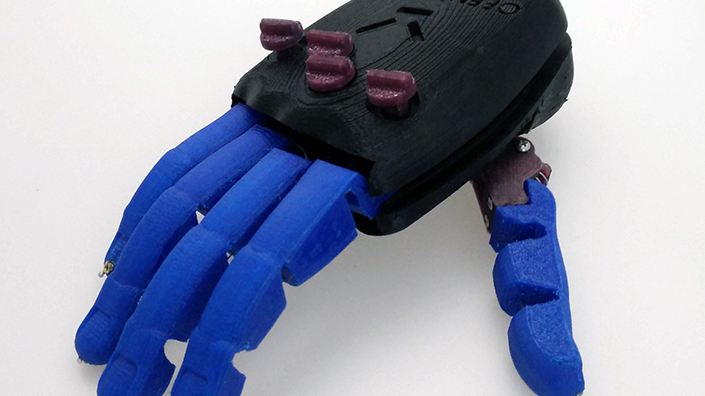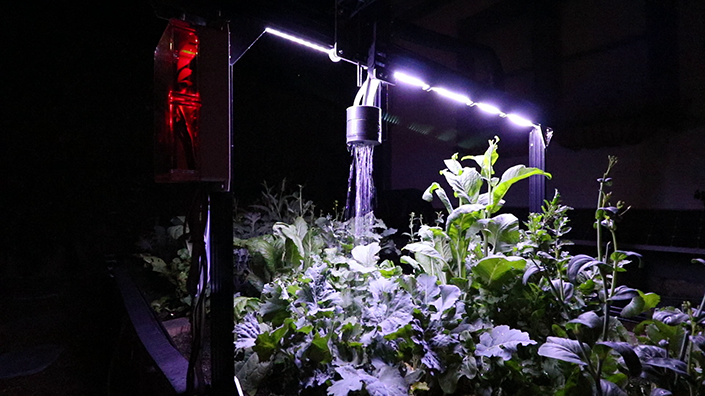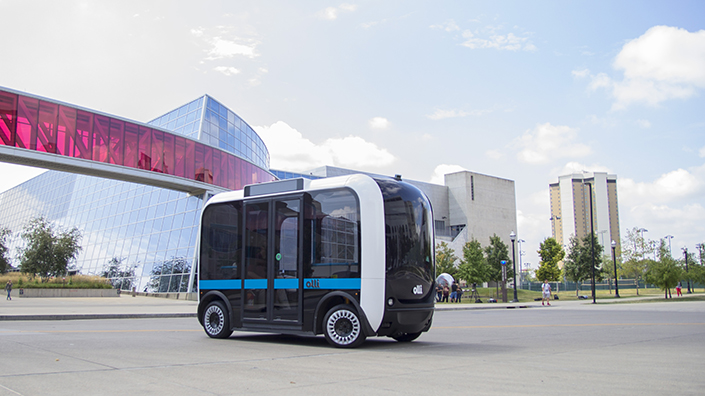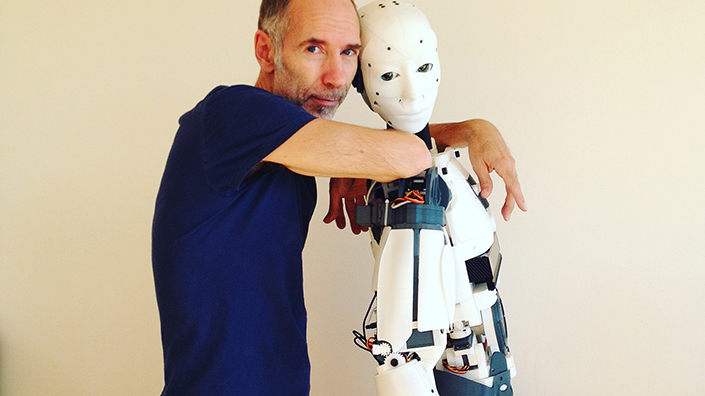They realised that, while there were lots of open-source resources for software and electronics engineers, there were few for mechanical design.
So they started to build their own library of components for their students based on Harvard’s expertise in soft robotics, and released it publicly. The Soft Robotics Toolkit is now a growing collection of open-source designs and instructions that is, critically, open to anyone. It includes snake-like actuators, artificial pneumatic muscles, and soft grippers.
“It was a way for different research groups to share their information, to teach each other how they were making stuff,” says Holland. “That way they can build off each other’s work.”
In software, making a program’s source code freely accessible has long been common practice. The same approach has also been successful in electronics, where standardised parts and open-source microcontrollers – Arduino is probably best known – make it relatively simple to dive in.
Mechanical hardware, however, is a different ball game. “When you talk about mechanical design, there’s almost infinite variability in terms of size, shape, materials, manufacturing processes,” says Holland. “There are fundamental challenges to sharing information that’s useful and detailed enough.”
But this may be about to change, thanks to some remarkable open-source hardware initiatives that are putting robotics technology into the hands of researchers, teachers and hobbyists. Driven by the growing popularity and affordability of rapid-prototyping technologies such as 3D printers, it is now possible to download designs for components such as grippers and actuators, and then print and assemble them yourself.
Around the new technology, a community is emerging that wants to design and build their own versatile robots from scratch – and then share their designs with the world. Designs from one project, the Natural Machine Motion Initiative, have been used to build everything from robotic snakes to remote-controlled human torsos. Yale University’s OpenHand Project provides 3D-printable robotic hand designs to encourage experimentation. Poppy, the world’s first 3D-printed, open-source android, was released in 2012 by researchers at the Flowers Lab in Bordeaux.
The community may still be small, but Francesco Mondada, a roboticist from the École Polytechnique Fédérale de Lausanne (EPFL) in Switzerland, believes the global drive towards open science will see it grow. “More and more people say you don’t have only to communicate your results but also how you got your results,” he says. “This is pushing open-source software and hardware.”
Re-engineering the world
Outside the lab, the democratisation of robotics technology is broadening access and bringing real-world benefits, says Minas Liarokapis, a roboticist from the University of Auckland in New Zealand.
He founded the OpenBionics initiative, which has developed a 3D-printed robotic prosthetic hand that costs under £140.
“When you distribute the design in an open-source manner you can help millions of people around the world who don’t have access to expensive prostheses,” he says.
The project’s designs are parametric, which means amputees can enter the length and breadth of their remaining hand to automatically adjust the dimensions to fit them perfectly. That’s important because a big problem with prosthetics is acceptance – how much patients use their device. Liarokapis says research shows that users involved in the design of their prosthesis like this have higher acceptance.
“Also when amputees have an affordable device they are not afraid they will damage it,” he adds. “So they tend to use it more frequently and do more complicated tasks.”

The OpenBionics initiative developed a 3D-printed robotic prosthetic hand that costs under £140
Others agree that prosthetics could be an early winner for the emerging open-hardware movement. US non-profit organisation Limbitless Solutions builds 3D-printed prosthetic hands for children and has open-sourced its designs. And the e-NABLE community brings together 3D-printer owners from around the world to create free prosthetics from several open-source designs.
In similar vein, education is a beneficiary of the move towards open-source robotics. EPFL’s Mondada is a principal contributor to Thymio – an affordable, wheeled robot designed to teach the basics of robotics and programming. The device is mass-produced, but the designs and software are open-source so users can build, modify and repair it.
“Our idea is really to provide something easy to maintain,” says Mondada. “But then if you have all the schematics, all the CAD drawings, then of course you can use that for education, too.” Mondada is working on a basic robot with a library of editable, 3D-printable designs to allow students to express their creativity.
Other open-source educational projects range from the simple wheeled cubes designed by California-based Barobo to spider-like 3D-printed robots from Metabot in France.
Now for the hard bit
For all the excitement, the open-robotics movement faces significant challenges – such as making money and developing a sustainable commercial strategy.
The approach of California-based company OpenROV is typical of many in the industry. It designs open-source underwater drones, and then sells ready-made vehicles or DIY kits to those who don’t want to build from scratch.
For Rory Aronson, chief executive and founder of Farmbot, which designs and sells an open-source farming robot, the biggest risk to an open-source business is another company producing knock-offs. His device operates like a 3D printer with a tool head suspended from a gantry running along two tracks. This lets the robot reach any spot in a flower bed, and it can be controlled with a simple web interface to automatically weed, water and plant seeds.
Farmbot only open-sources its designs once they are ready to ship, so it always has a first-mover’s advantage, says Aronson. It also heavily markets the open-source nature of its product.
“People like open-source,” says Aronson. “It’s not just a product you are buying. You enter into a community, you’re buying into a philosophy.”

Open-source gardening robot Farmbot
The decision to open-source was primarily ethical, says Aronson, but he believes the community that Farmbot is building will accelerate innovation. “If you can get 10,000 customers and just 5% make material contributions online, they really add up,” he says.
Less purist open-source models are emerging, too. Local Motors made waves in 2010 with its open-source 3D-printed off-road vehicle called the Rally Fighter. But executive vice-president (and pleasingly named) Matthew Rivett admits that the firm has taken more of a “hybrid model” with its latest invention, Olli, a 3D-printed driverless pod.
With Olli, the company has deployed a “co-creation community” of designers, engineers and users who help develop the vehicles in return for financial rewards. The concept for Olli was devised by industrial designer Edgar Sarmiento before being refined by the community and in-house engineers.
This process means that designs are freely accessible on the firm’s website but, unlike with the Rally Fighter, Local Motors has patented a few crucial elements. This gives it the best of both worlds, says Rivett, tapping into collaborative innovation while protecting its designs.
“It is a little bit of an evolution,” he says. “As we learn and as we move forward there’s certain pieces that we just need to hold on to.”
But, like Farmbot, he says the firm’s main defence against knock-offs is speed to market. And Rivett envisages a future where advances in additive manufacturing will allow the company to build vehicles as fast as software. “Then we will not need to protect anything,” he says.
Hurdles to overcome

Driverless pod Olli, which uses a 'hybrid model'
It’ll be a while yet before mechanical engineers can build vehicles as quickly as software, says Harvard’s Holland. Most desktop 3D printers can also only use limited materials, and the layer-by-layer fabrication results in less robust parts than when using injection moulding.
“Trying to design, build and test something physical takes days,” he says. “It’s always slower for us.”
Tapping into open-source’s innovative potential requires the emerging industry to develop detailed documentation and instructions so that designers and engineers can start to build and modify devices. “Otherwise it’s just hardware that’s open, not open-source hardware in the sense of something that’s a benefit to the community,” says Mondada.
But momentum is building and, while 3D printing hasn’t yet lived up to the promise of on-demand, distributed manufacturing, it is surely not far off. When it does deliver, people will increasingly demand open-source products – whether robots or washing machines – so they can repair and customise them as they see fit.
“When the 3D-printing revolution is actually ushered in, people are going to expect and demand that,” says Farmbot’s Aronson.
“But it’s going to take companies and people pushing that agenda forward for it to gain a critical mass.”
Rise of the makers

Gael Langevin built humanoid robot InMoov and open-sourced the design
The rise of the maker movement – a community of DIY inventors and tinkerers – has seen growing interest from hobbyists keen to build robots. French sculptor Gael Langevin has no background in robotics, but has designed a life-sized humanoid robot called InMoov that’s built from 3D-printed parts and off-the-shelf components for under £1,300.
Most innovation from the project’s online community comes from hobbyists rather than academics, says Langevin. This ranges from simple tweaks such as more realistic fingers to integrating lidar to give the robot depth-sensing.
“You would be really surprised how developed the skills of some of these people are,” he says. “Gathering all those people into one project is very powerful.” They are still working on the robot’s legs, but he estimates that more than 1,000 InMoovs have been built by teams at 79 universities.
Content published by Professional Engineering does not necessarily represent the views of the Institution of Mechanical Engineers.